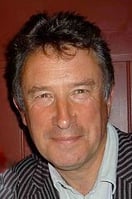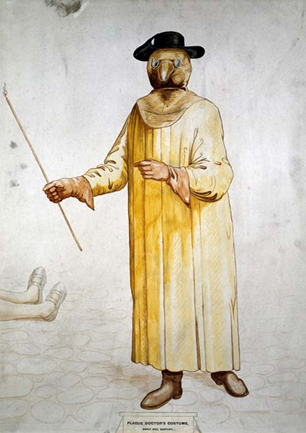Guest Feature by Dr John Wynn-Jones: The Four Seasons
 Dr John Wynn-Jones is well known in WONCA circles and immediate past chair of the WONCA Working Party on Rural Practice. During the COVID-19 crisis he has been writing a daily 'Rural Miscellany' email with poems and resource ideas to help and divert us in this difficult time. He graciously agreed to write a guest column for WONCA News this mont
Dr John Wynn-Jones is well known in WONCA circles and immediate past chair of the WONCA Working Party on Rural Practice. During the COVID-19 crisis he has been writing a daily 'Rural Miscellany' email with poems and resource ideas to help and divert us in this difficult time. He graciously agreed to write a guest column for WONCA News this month.
I get up early each morning and go for a short walk along the river by my house keeping my distance from anyone that I meet. This morning was a particularly bright sunny spring day and it is truly ironic that we find ourselves in isolation and solitude during one of the most beautiful springs in recent years. This morning as I walked, I listened to Vivaldi’s Four Seasons. This joyful music lifted my mood and I began to wonder whether illness and the plague would have impacted on the thriving creative environment that developed during the glorious age of the Venetian Republic. Can the arts flourish at a time of pestilence and are the two mutually exclusive?
Antonio Lucio Vivaldi was born in born in Venice in 1678. His father was a renowned violinist and he grew up in a musical family. At the age of 15, he began to study for the priesthood, and was ordained as a priest in 1703. Vivaldi wrote over 500 instrumental concertos and sacred choral works. He also composed some 40 operas but he probably now known mostly for The Four Seasons (Le Quattro Stagioni). The work is a group of four violin concerti, each representing a season of the year. He also published 4 sonnets, one to accompany each concerto.
Outbreaks of the plague were commonplace across Europe at the time, causing widespread panic and fear. Venice was particularly prone due to it being maritime gateway and having a damp waterlogged environment. Between 1456 and 1528, there were fourteen documented plague outbreaks in the city. One of the victims of the 1510 outbreak was the young Giorgione, one of the city’s most celebrated painters. The 1630 plague was the most devastating, killing a third of the city’s population. The memories of that epidemic had a major economic impact on the republic and were still relatively fresh when Vivaldi was born a couple of generations later. It is probable that the repeated outbreaks contributed to the economic decline and eventual downfall of the republic.
Lazzaretto Vecchio, an island in the Lagoon is believed to be the world's first lazaret—a quarantine colony intended to help prevent the spread of infectious diseases. It helped Venice recover more quickly, was opened during outbreaks and its presence helped the city recover more quickly. When plague struck the city, everybody sick or showing any suspect symptom were restricted on the island until they recovered or died

One of the images associated with the plague was that of the Plague Doctor. These physicians specialised in treating victims of the plague. They were public servants hired in towns and cities when the plague struck. Their duties were to treat and cure victims and bury the dead. They wore a particular costume and mask to ward off infection and bizarrely has some resemblance to the PPE of today. They were also responsible for cataloguing and recording the outbreaks
What impact did the plague have on the culture of Venice? By the time of Vivaldi, the republic had already been in decline as a trading power. Some of this was due to the impact on the economy, the workforce and its fighting capability. Instead Venice was becoming a city of culture, a visitor attraction and fashion setter. Every time that the city was riven by plague, relieved and terrified citizens gave money to build plague churches in the hope that this would save them. These churches contributed to the architectural splendour of the city. This mood was also captured in art (through the sacred works of painters such as Titian and Tintoretto) and in the music of composers such as Vivaldi. The influence on Vivaldi was exemplified in some of his sacred and sombre music such as The Credo. It’s difficult not to draw some comparisons with the world that we find ourselves in now and our impotence in dealing with a modern 21st century plague.
Finaly let us return to the happy and enjoyable music of the Four Seasons and in particular Spring and Summer and I leave you with his sonnets to those two seasons. Let’s hope that we can soon return to enjoying the seasons ourselves.
La Primavera (Spring)
Festive Spring has arrived,
The birds salute it with their happy song.
And the brooks, caressed by little Zephyrs,
Flow with a sweet murmur.
The sky is covered with a black mantle,
And thunder, and lightning, announce a storm.
When they are silent, the birds
Return to sing their lovely song.
And in the meadow, rich with flowers,
To the sweet murmur of leaves and plants,
The goatherd sleeps, with his faithful dog at his side.
To the festive sound of pastoral bagpipes,
Dance nymphs and shepherds,
At Spring's brilliant appearance.
L'Estate (summer)
Under a hard Season, fired up by the Sun
Languishes man, languishes the flock and burns the pine
We hear the cuckoo's voice;
then sweet songs of the turtledove and finch are heard.
Soft breezes stir the air but threatening
the North Wind sweeps them suddenly aside.
The shepherd trembles,
fearing violent storms and his fate.
The fear of lightning and fierce thunder
Robs his tired limbs of rest
As gnats and flies buzz furiously around.
Alas, his fears were justified
The Heavens thunders and roar and with hail
Cuts the head off the wheat and damages the grain.
Listen to you own version or the International Orchestra of Geneva's version here.